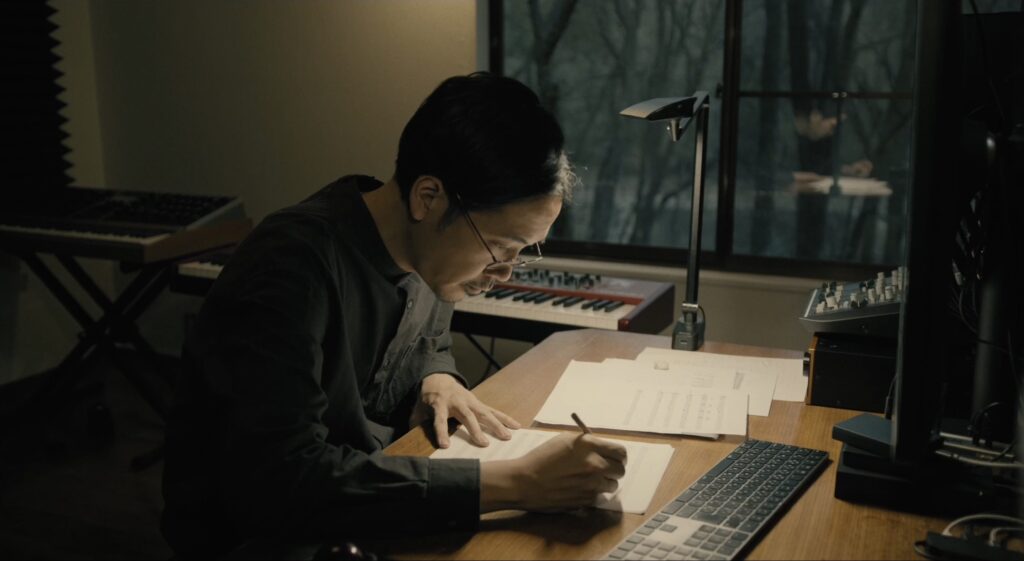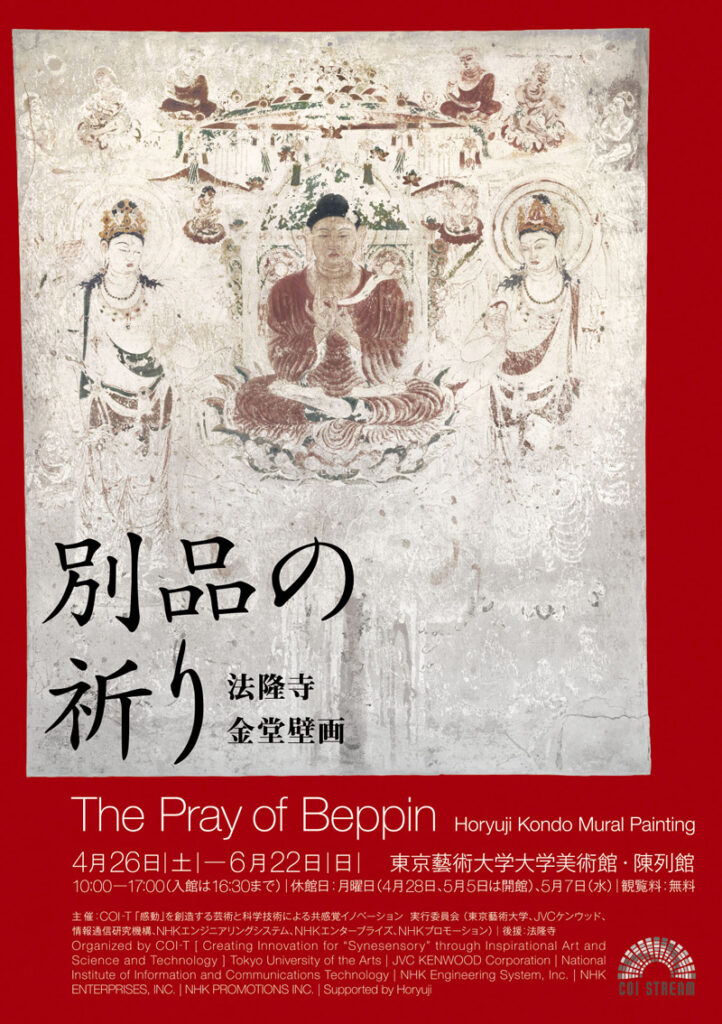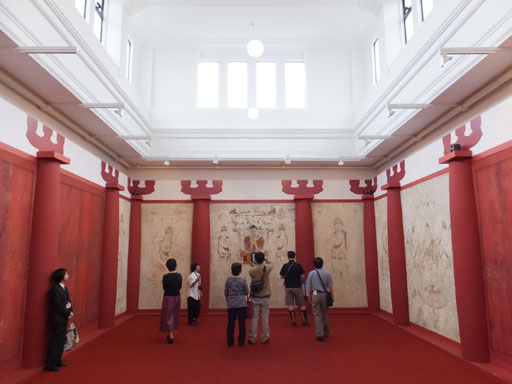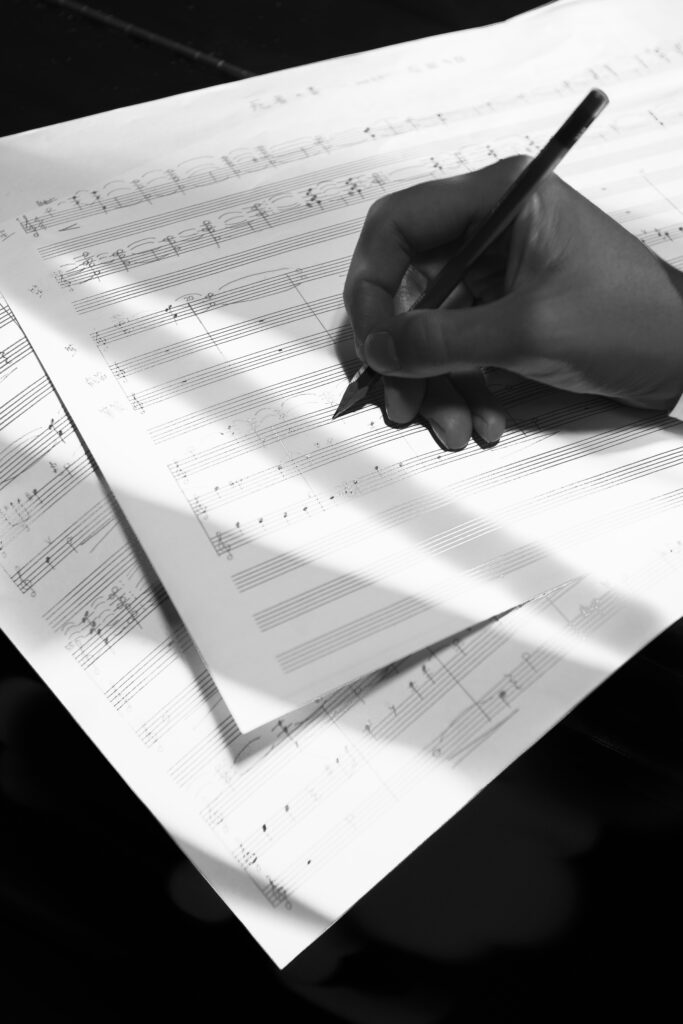
Over 1,400 years ago, Gagaku was introduced to Japan from foreign lands. In the Japanese environment, it evolved into a sound layered with various cultural, philosophical, aesthetic, astronomical, and traditional influences, at times light and airy, and at other times deep and rich.
In practice, Gagaku is performed with an ensemble that includes three wind instruments—the shō (mouth organ), hichiriki (double-reed flute), and ryūteki (transverse flute)—two string instruments, the biwa (like lute) and the koto (zither), and three percussion instruments, the taiko (drum), kakko (small drum), and shōka (gong). Depending on the piece and the scene, dance is also incorporated. There is no conductor. Musicians, singers, and dancers harmonize by sensing each other's breath and timing, layering the sounds together.
I often refer to Gagaku as a form of "layering." Taro’s (hereafter referred to as Taro) first composition incorporating Gagaku instruments was a journey of stripping away these layers, peeling them back one by one to uncover the core.

In 2014, Taro was commissioned by his alma mater, Tokyo University of the Arts, to compose music for the special exhibition "Prayers of the Beppin—Hōryūji Kondo Mural Painting " held at the university's museum. The professor in charge specifically requested that Gagaku be used for the first floor and Shōmyō (Buddhist chanting) for the second.
According to the exhibition’s official website, the event showcased the restoration of the murals from the Hōryūji temple’s Kondo (Main Hall), which had been damaged by fire in 1949. The exhibition used cutting-edge digital technology, including 8K super high-definition projectors, to recreate the murals at their original scale. Utilizing photographs, collotype prints, and reproductions by artists taken before the fire, the university combined modern digital techniques with its patented mural reproduction technology to present a new interpretation that fused the "tradition" inherited from the Tokyo Fine Arts School with "contemporary" innovation.
The murals themselves, painted in the Asuka period, are among the largest works of Japanese painting. Some panels measure approximately 2.6 meters wide and 3.1 meters tall, with the figures of the Buddhas being particularly grand in scale. Despite the fire damage, the murals remain designated as important cultural assets of Japan.
In this sacred space surrounded by these revered murals, Taro was entrusted with creating the accompanying soundscape.

Although Taro had encountered Gagaku during his studies at university, he never imagined that he would compose for it.
For about a month and a half, he read countless documents, researched the instruments, and listened to various pieces of Gagaku. It was a new and unfamiliar territory for him. To make things more challenging, the music needed to suit the museum setting, where visitors would primarily be there to observe the exhibition. Taro struggled with this immensely, describing it as “truly painful.”
Then, as he looked more closely at the exhibition, his focus shifted to the expressions of the Buddhas depicted in the murals. Unlike the warm and compassionate gaze often seen in Western religious paintings, the Buddha’s eyes were barely open, as if gazing at something vast and undefinable—perhaps into the void, or “Kū” (emptiness).
Taro had a realization: "These eyes are looking at everyone, equally observing the world." Whether one is experiencing joy or suffering through something akin to hell, the Buddha's gaze acknowledges and watches over all equally. In the Buddha's gaze, Taro felt "hope" and felt that it was common to the world of gagaku.
At this moment, Taro saw the whole life of a human being beyond the Buddha's gaze. It inspired the creation of his work "Kotsuka" (Song of the Bones). He imagined the journey from life to death, from being fully alive to becoming mere bones, all the while watched over by the Buddha’s unwavering gaze.
In contrast to the usual rich, layered Gagaku ensemble, Taro stripped away the instruments one by one, just as layers of clothing might be removed from a person until only their bones remain. He reduced the instrumentation to the simple, solitary sound of the biwa.
Please take a moment to listen to the piece here:
When I heard this composition, I felt as though I was standing before the gaze of the Buddha himself.
Taro also completed another piece, "Banshōka" (Song of All Things), which incorporated Shōmyō chanting.
While based on Shōmyō, the piece took on a new form, far from its origins, blending vocals (by musician Oorutaichi), tuba, drums, and synthesizers.

In Taro’s hands, the layers of Gagaku were peeled away, deconstructed, and reassembled into a new, modern composition. In a sense, Taro added his own layer—his self, and his present moment—to the tradition.
During the exhibition, world-renowned musician Ryuichi Sakamoto listened to the music and personally called Taro into a separate room to express his admiration.
Since then, Taro has added new layers to his identity as a composer. He says, "Composing with Gagaku elements and instruments is challenging, but it’s also incredibly enjoyable."
Taro continues to explore the wonders and mysteries of gagaku and how its essence and instruments can be integrated into contemporary music and visual works. I still have a lot of work to do. I would like to continue to explore it.
Written by Atsuko Aoyagi / ao.Inc.
#DailyThoughts #JapaneseTraditionalMusic #Composition
#Gagaku #ComposingGagaku #NonMusic #GagakuPerformance
#FilmMusic #CinematicMusic #SpatialMusic #GagakuStories #SideNotes
#WhyIs #Gagaku #Layer #AndMysterious